
Format: Paperback
Pages: 160
ISBN: 9782815102469
Pub Date: 24 Aug 2015
Imprint: OREP
Illustrations: Scenes of the whole
Bayeux Tapestry
Description:
The Bayeux Tapestry, a truly unique masterpiece, is in fact a woollen embroidery on a linen canvas. Over a length of 70 metres, it tells the story of the Norman Conquest of England by William, Duke of Normandy, in 1066. It also proves to be an excellent documentary source on 11th century life.
As its superb reproductions unfold, the author strives to depict the events that spurred the conquest and to re-enact the famous Battle of Hastings, during which Harold II of England was killed. Freezes on several frames enable the spectator to grasp the details of day-to-day life and to appreciate some rather comical figures.
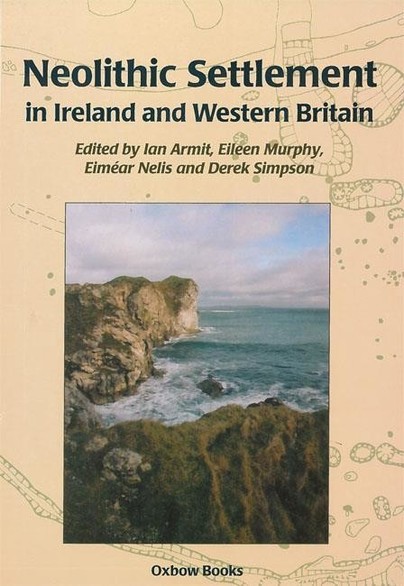
Format: Paperback
Pages: 232
ISBN: 9781782979869
Pub Date: 31 Jul 2015
Illustrations: 116 b/w figs, 13 tbs
Description:
The past few years have seen an upsurge in the numbers of known Neolithic settlements in Ireland. Many of these sites have been excavated by archaeologists based in field units, but few are well-known to the wider archaeological community. The papers in this volume which were presented at a conference held at Queen's University, Belfast in 2001, provided a forum for a discussion of the new Neolithic material from Ireland in its wider geographical context.
Although the bulk of the emerging Irish settlement evidence relates to substantial houses, many of these papers consider wider themes, including issues of contact and communication along the sea routes and coastal margins of north-west Europe, questions of diversity and regional patterns of sedentism and mobility, and variations in regional food production strategies. The volume includes twenty-six papers representing a series of studies ranging geographically from Orkney to the French Atlantic facade. Contents: Introduction ( Ian Armit, Eileen Murphy, Eiméar Nelis and Derek Simpson ); French Connections I: Spreading the marmites thinly ( Alison Sheridan ); French Connections II: Of cows and men ( Anne Tresset ); Contemplating some awful(ly interesting) vistas: Importing cattle and red deer into prehistoric Ireland ( Peter Woodman and Margaret McCarthy ); Terminology, time and space: Labels, radiocarbon chronologies and a 'Neolithic' of small worlds ( Patrick Ashmore ); Rooted or routed? Landscapes of Neolithic settlement in Ireland ( Gabriel Cooney ); The early farming settlement of south western England in the Neolithic ( Roger Mercer ); Neolithic settlement in the lowlands of Scotland: A preliminary survey ( Gordon Barclay ); Once upon a time Skara Brae was unique ( David Clarke ); The Drowners: Permanence and transience in the Hebridean Neolithic ( Ian Armit ); Neolithic Northton: A review of the evidence ( Eileen Murphy and Derek Simpson ); Billown and the Neolithic of the Isle of Man ( Timothy Darvill ); The Early Neolithic and the Manx environment ( Peter J Davey and Jim B Innes ); Rheast Buigh, Patrick: Middle Neolithic exploitation of the Manx uplands? ( Peter J Davey and Jenny Woodcock ); What do we mean by Neolithic settlement? Some approaches, 10 years on ( Alex Gibson ). The Irish 'house boom'. Irish Neolithic houses ( Ian Armit, Eileen Murphy, Eiméar Nelis and Derek Simpson ); Excavations at Thornhill, Co. Londonderry ( Paul Logue ); Neolithic houses in Ballyharry townland, Islandmagee, Co. Antrim ( Dermot G Moore ); Neolithic structure at Drummenny Lower, Co. Donegal: An environmental perspective ( Cathy Dunne ); The excavation of a Neolithic house at Enagh townland, Co. Derry ( Cormac McSparran ); Archaeological excavations of a Neolithic settlement at Coolfore, Co. Louth ( Cóilín O Drisceoil ); A Neolithic house in Cloghers, Co. Kerry ( Jacinta Kiely ); Neolithic beginnings on Roughan Hill and the Burren ( Carleton Jones ). Irish Neolithic settlement architecture: A reappraisal ( Sarah Cross ); Donegore and Lyles Hill, Neolithic enclosed sites in Co. Antrim: The lithic assemblages ( Eiméar Nelis ); Neolithic expectations ( Richard Bradley ).
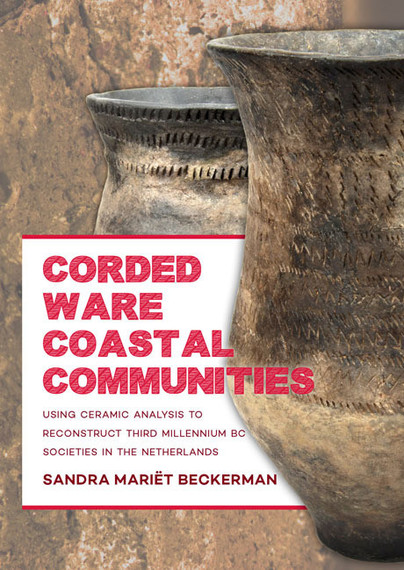
Format: Paperback
Pages: 302
ISBN: 9789088903182
Pub Date: 17 Jun 2015
Imprint: Sidestone Press
Illustrations: 50bw/15fc
Description:
The Corded Ware Culture (c. 2900–2300 BC) is found in a large area, from Russia to the Netherlands and from Scandinavia to Switzerland. Supra-regional elements include beakers decorated with cord and/or spatula imprints, battle-axes, and a funerary customs involving crouched inhumations under barrows with gender-specific placement of the body gender-specific funerary gifts.
Analysis of ceramics from well-preserved settlements from the Dutch coastal zone have provided very valuable new information on the Corded Ware chronology, social organisation, ideology, subsistence, and use of material culture. A critical review of the commonly applied chronological models shows that many of the underlying premises cannot be supported due to problems with (broad calibration and sample reliability of) 14C dates. This study shows that in the Neolithic Dutch coastal zone, the thin-walled ceramics reflect supra-regional (Corded Ware ) affiliations, whereas the medium-thick-walled and thick-walled ceramics reflect persistent regional (Vlaardingen) traditions. The beakers decorated with cord and spatula impressions were used primarily for cooking; indications for the often proposed use of alcohol (and associated rise of individualisation and elites) were not found.It is argued in this study that the Corded Ware Culture represents an economic alliance, a dynamic totality as well as a network linking regional groups – each with a distinct economic base, material culture and ideology. These communities all participated in a vast supra-regional network that was a platform for inter-community exchanges of goods, skills, ideas and possibly people. Affiliation to this supra-regional network was a vital aspect for all regional groups involved, and membership to it was expressed by using a set of common traits. Decorated thin-walled beakers act as symbols of these supra-regional networks and thus embody both functional and ideological roles.

Format: Hardback
Pages: 80
ISBN: 9782840484226
Pub Date: 15 May 2015
Imprint: Heimdal
Description:
The kitchen of the thirteenth century was long forgotten, overshadowed by the emblematic works, The Viandier Taillevent and Le Mesnagier of Paris, appeared in the fourteenth century. The thirteenth century was a time extension, intense trade, cultural exchanges. This is the golden age for Normans establishing themselves in many countries.
In Western Europe this unity and community is greater than ever known before. Their kitchen is a testament to this European cohesion. This book is interested in the recipes presented in Anglo-Norman manuscripts and Scandinavian. They are copies of earlier texts from France, Sicily, themselves copied from other texts or finding their sources of inspiration in the Greco-Latin culture and cuisine of the East. Emblematic dishes that will the reputation of the kitchen Taillevent There are already appearing. The foundations of the medieval kitchen are given.Culinary is constantly changing, it is never a revolution. Acids or sweeter flavors, popular colours, subtle flavours, worked textures, cooking in the thirteenth century offers a wide and varied range recipes as delicious as each other.- TEXT IN FRENCH -
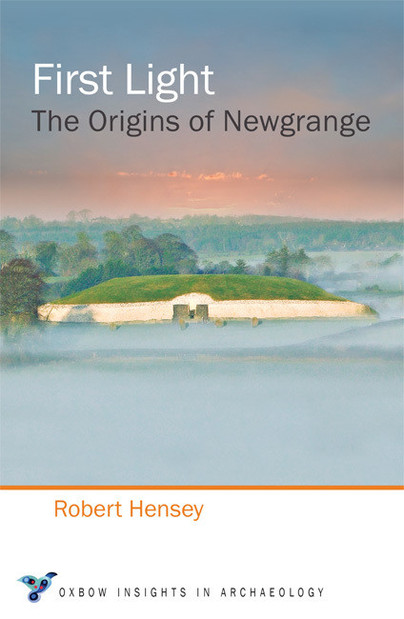
Format: Paperback
Pages: 210
ISBN: 9781782979517
Pub Date: 14 May 2015
Series: Oxbow Insights in Archaeology
Description:
Newgrange in Ireland is a world famous monument not only because of its vast scale and elaborate megalithic art, but also because of its renowned alignment to the sun on the winter solstice. Yet the origins of Newgrange remain somewhat mysterious. Across Ireland over two hundred similar passage tombs are found, some of which are considerably older than Newgrange.
These less investigated monuments reveal that the origins of Newgrange may be hidden in plain sight. A progression in the scale and sophistication of construction of these passage tombs, developments in the styles of megalithic art, and an increase in the scale and craftsmanship of associated artefacts may be observed, which taken together indicate a lengthy process of development. In short, Robert Hensey uncovers an untold history at Newgrange; an island-wide story of incremental changes over hundreds of years, of a society in evolution, perhaps in extremis, who left behind such a rich, enigmatic and patterned legacy. This book not only charts the earlier history of Newgrange, but addresses why it was constructed, what was its purpose. In the Boyne Valley, through Newgrange and related sites at Brúna Bóinne, we have evidence not only of extraordinary physical accomplishments, but of tremendous acts of imagination; a testament to rich and developed inner worlds. In this book, it is proposed that the concept of an otherworld which could be embodied by and accessed through passage tombs was a central motivator in passage tomb construction from its earliest beginnings. Newgrange is at the end of a long tradition of monuments dedicated to the religious needs of Neolithic communities, from small-scale monuments built by early farming groups; to potent otherworld centres of ritual training at the edge of society; eventually to temple-like monuments standing at the very heart of the religious and political sphere in Neolithic Ireland. Challenging both orthodox archaeological opinions and popular conjecture, this will be an important book for anyone interested in Neolithic archaeology.

Format: Hardback
Pages: 616
ISBN: 9781782976943
Pub Date: 30 Apr 2015
Illustrations: Fully colour illustrated, includes CD
Description:
The exotic and impressive grave goods from burials of the ‘Wessex Culture’ in Early Bronze Age Britain are well known and have inspired influential social and economic hypotheses, invoking the former existence of chiefs, warriors and merchants and high-ranking pastoralists. Alternative theories have sought to explain how display of such objects was related to religious and ritual activity rather than to economic status, and that groups of artefacts found in certain graves may have belonged to religious specialists. This volume is the result of a major research project that aimed to investigate Chalcolithic and Early Bronze Age grave goods in relation to their possible use as special dress accessories or as equipment employed within ritual activities and ceremonies.
Many items of adornment can be shown to have formed elements of elaborate costumes, probably worn by individuals, both male and female, who held important ritual roles within society. Furthermore, the analysis has shown that various categories of object long interpreted as mundane types of tool were in fact items of bodily adornment or implements used in ritual contexts, or in the special embellishment of the human body.Although never intended to form a complete catalogue of all the relevant artefacts from England the volume provides an extensive, and intensively illustrated, overview of a large proportion of the grave goods from English burial sites.

Format: Paperback
Pages: 250
ISBN: 9789088902932
Pub Date: 30 Apr 2015
Imprint: Sidestone Press
Description:
Between 2008 and 2011 excavations were undertaken by the Cornwall Archaeological Unit at Tremough, near Penryn, Cornwall. The site is situated on a plateau overlooking the Carrick Roads, historically one of the busiest waterways in Cornwall.The excavations led to a large number of significant archaeological features being uncovered ranging from Neolithic pits to Bronze Age structures and late prehistoric enclosures.
Foremost of these sites were a Middle Bronze roundhouse (circa 1500-1300 cal BC) and a large circular Late Bronze Age enclosure (circa 1000-800 cal BC).Importantly, the roundhouse was found to contain stone moulds associated with the production of socketed tools and pins, and traces of metalworking were found inside the building. As such, the excavations have provided the first evidence for metalworking inside a Middle Bronze Age roundhouse in southern England, as well as radiocarbon dating for a range of metalwork forms. As part of the project finds of metalwork from other roundhouses in the South West region have been reassessed.The Late Bronze Age enclosure is the first of its type to found in the South West of Britain. It encircled a large number of pits and postholes, some of which were associated with rectangular post-built structures. A carefully made cairn of burnt stone beside a large pit and a second large pit containing burnt stone and pottery were also investigated. These may have been associated with cooking or perhaps with a small-scale episode of metalworking, as the tip of a sword mould was found in one of the pits.The significance of the investigated sites is fully discussed with regard to their relationships with other prehistoric sites on the plateau and in terms of their wider context with other sites in the South West and beyond.

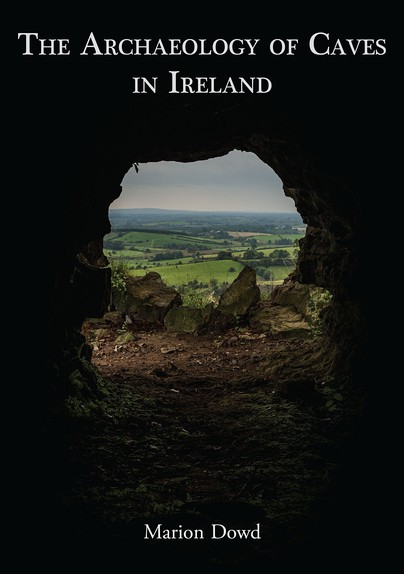
Pages: 340
ISBN: 9781782978138
Pub Date: 30 Apr 2015
Illustrations: b/w and colour illustrations
Pages: 336
ISBN: 9781789255706
Pub Date: 15 Nov 2020
Illustrations: b/w and colour illustrations
Description:
The Archaeology of Caves in Ireland is a ground-breaking and unique study of the enigmatic, unseen and dark silent world of caves. People have engaged with caves for the duration of human occupation of the island, spanning 10,000 years. In prehistory, subterranean landscapes were associated with the dead and the spirit world, with evidence for burials, funerary rituals and votive deposition.
The advent of Christianity saw the adaptation of caves as homes and places of storage, yet they also continued to feature in religious practice. Medieval mythology and modern folklore indicate that caves were considered places of the supernatural, being particularly associated with otherworldly women. Through a combination of archaeology, mythology and popular religion, this book takes the reader on a fascinating journey that sheds new light on a hitherto neglected area of research. It encourages us to consider what underground activities might reveal about the lives lived aboveground, and leaves us in no doubt as to the cultural significance of caves in the past. Winner of the Current Archaeology Book of the Year 2016 award. Winner of the Tratman 2015 Award.
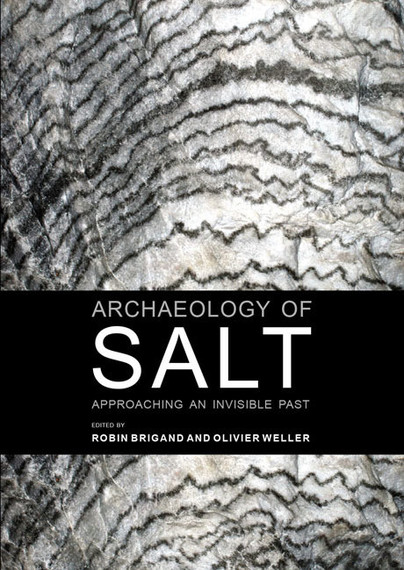
Format: Paperback
Pages: 228
ISBN: 9789088903038
Pub Date: 02 Apr 2015
Imprint: Sidestone Press
Description:
Salt is an invisible object for research in archaeology. However, ancient writings, ethnographic studies and the evidence of archaeological exploitation highlight it as an essential reference for humanity. Both an edible product and a crucial element for food preservation, it has been used by the first human settlements as soon as food storage appeared (Neolithic).
As far as the history of food habits (both nutrition and preservation) is concerned, the identification and the use of that resource certainly proves a revolution as meaningful as the domestication of plants and wild animals. On a global scale, the development of new economic forms based on the management of food surplus went along an increased use of saline resources through a specific technical knowledge, aimed at the extraction of salt from its natural supports.Considering the variety of former practices observed until now, a pluralist approach based on human as well as environmental sciences is required. It allows a better knowledge of the historical interactions between our societies and this “white gold”, which are well-known from the Middle-Ages, but more hypothetical for earlier times.This publication intends to present the most recent progresses in the field of salt archaeology in Europe and beyond; it also exposes various approaches allowing a thorough understanding of this complex and many-faceted subject. The complementary themes dealt with in this book, the broad chronological and geographical focus, as well as the relevance of the results presented, make this contribution a key synthesis of the most recent research on this universal topic.

Format: Paperback
Pages: 248
ISBN: 9781842171097
Pub Date: 31 Mar 2015
Series: Cardiff Studies in Archaeology
Illustrations: 135 b/w figs.,
Description:
This collection of 24 papers aims to reconsider the nature and significance of the Irish Sea as an area of cultural interaction during the Neolithic period. The traditional character of work across this region has emphasised the existence of prehistoric contact, with sea routes criss-crossing between Ireland, the Isle of Man, Anglesey and the British mainland. A parallel course of investigation, however, has demonstrated that the British and Irish Neolithics were in many ways different, with distinct indigenous patterns of activity and social practices.
The recent emphasis on regional studies has further produced evidence for parallel yet different processes of cultural change taking place throughout the British Isles as a whole. This volume brings together some of these regional perspectives and compares them across the Irish Sea area. The authors consider new ways to explain regional patterning in the use of material objects and relate them to past practices and social strategies. Were there practices that were shared across the Irish Sea area linking different styles of monuments and material culture, or were the media intrinsic to the message? The volume is based on papers presented at a conference held at the University of Manchester in 2002.
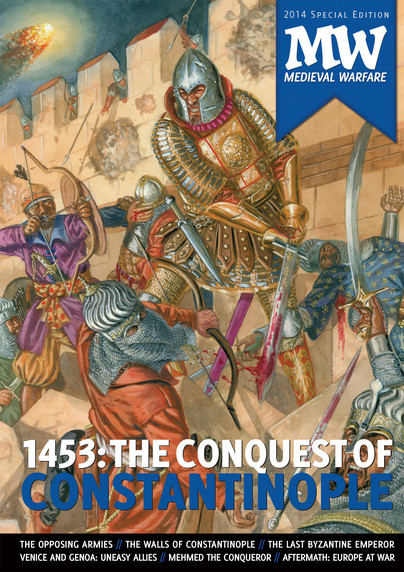
Format: Paperback
Pages: 80
ISBN: 9789490258108
Pub Date: 28 Feb 2015
Imprint: Karwansaray Publishers
Illustrations: 95
Description:
The 2014 Medieval Warfare Special issue is entirely dedicated - all 84 pages - to the Fall of Constantinople in 1453. It's like a normal issue, except it'll have more pages, more articles, more maps and more illustrations! Medieval Warfare Special 2014: 1453 - The Conquest of Constantinople with: - Eugenia Russel, Historical introduction – the destruction of the Oikoumeni - Kenneth Cline, Constantine XI – no room to maneuver - Murat Özveri, Mehmed ‘the Conqueror’ – A sultan of paradoxes - Nicola Bergamo, Venice, Genoa and Byzantium – difficult ‘trio' - Konstantin Nossov, The walls of Constantinople - Stephen Bennett & Nils Visser, The Conquest of Constantinople - Murray Dahm, Fallout – Contemporary reactions to the loss of Constantinople - Lukasz Rozycki, The fall of the Old World through the eyes of the “Polish janissary” - Raffaele D’Amato, The last defenders – the Roman army - Vassilis Pergalias, The final opponents – the Ottoman army - Ben Sheppard, Aftermath

Format: Paperback
Pages: 176
ISBN: 9781782978091
Pub Date: 26 Feb 2015
Illustrations: b/w illustrations
Description:
The prehistories of Britain and Ireland are inescapably entwined with continental European narratives. The central aim here is to explore ‘cross-channel’ relationships throughout later prehistory, investigating the archaeological links (material, social, cultural) between the areas we now call Britain and Ireland, and continental Europe, from the Mesolithic through to the end of the Iron Age. Since the separation from the European mainland of Ireland (c.
16,000 BC) and Britain (c. 6000 BC), their island nature has been seen as central to many aspects of life within them, helping to define their senses of identity, and forming a crucial part of their neighbourly relationship with continental Europe and with each other. However, it is important to remember that the surrounding seaways have often served to connect as well as to separate these islands from the continent. In approaching the subject of ‘continental connections’ in the long-term, and by bringing a variety of different archaeological perspectives (associated with different periods) to bear on it, this volume provides a new a new synthesis of the ebbs and flows of the cross-channel relationship over the course of 15,000 years of later prehistory, enabling fresh understandings and new insights to emerge about the intimately linked trajectories of change in both regions.

Format: Paperback
Pages: 80
ISBN: 9782815102445
Pub Date: 27 Jan 2015
Imprint: OREP
Illustrations: black & white illustrations
Description:
There, at about forty meters high and on a tray of some hundred meters wide, extends a fortress even more formidable than those of Pevensey and Hastings. It is the army of king Harold of England, wall of thousands of shields arranged in several rows. Raised on his horse, our Duke Guillaume raises his stick of command.
" Diex ouch! " He exclaims." To us, the Normans, to you, young person Arnoul, to face the fate! "With Arnoul, young 15-year-old Norman, lover of his beautiful Mahaut, cross the sea together with thousands of men and with horses, towards England.
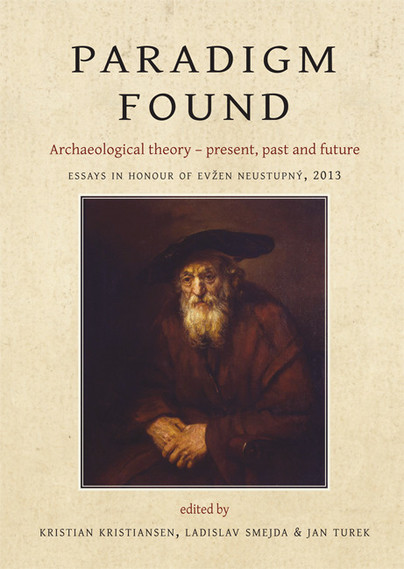
Format: Hardback
Pages: 288
ISBN: 9781782977704
Pub Date: 21 Jan 2015
Illustrations: b/w and colour illustrations
Description:
Paradigm Found brings together papers by renowned researchers from across Europe, Asia and America to discuss a selection of pressing issues in current archaeological theory and method. The book also reviews the effects and potential of various theoretical stances in the context of prehistoric archaeology. The 23 papers provide a discussion of the issues currently re-appearing in the focal point of theoretical debates in archaeology such as the role of the discipline in the present-day society, problems of interpretation in archaeology, approaches to the study of social evolution, as well as current insights into issues in classification and construction of typologies.
Taking a fresh, and often provocative, look at the challenges contemporary archaeology is facing, the contributors evaluate the effects of past developments and discuss the impact they are likely to have on future directions in archaeology as an internationally connected discipline. In its final part the volume reflects on current thinking on prehistory, using case-studies from a number of European regions and the Mediterranean, from the Neolithic to the Roman Period.The volume represents a tribute to the lifetime achievements of Professor Evžen Neustupný, a distinguished Czech archaeologist who contributed to the advancement of prehistoric studies in Europe and to archaeological theory and method in particular.
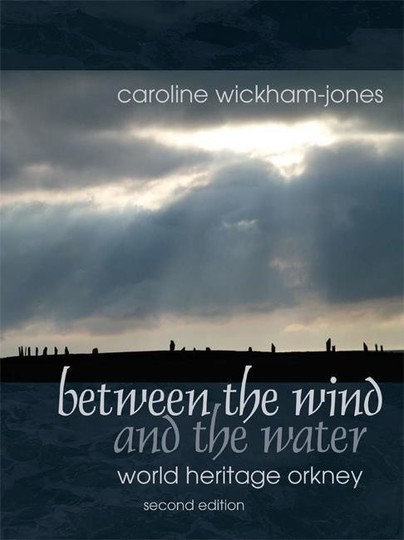
Format: Paperback
Pages: 178
ISBN: 9781909686502
Pub Date: 08 Jan 2015
Imprint: Windgather Press
Illustrations: b/w and col illus
Description:
The Archaeological sites of Orkney give us an unparalleled glimpse into prehistory. Inscribed as the 'Heart of Neolithic Orkney' World Heritage Site in 1999, four great monuments - the village of Skara Brae, the Ring of Brodgar, the Stones of Stenness and the burial mound of Maeshowe - are also at the centre of the archipelago's story. This book looks at what makes these monuments so special.
Caroline Wickham-Jones explores the Neolithic world in which they were built, how they caome to be a focus through the ages, and what they mean today. Picts, saints, Vikings, antiquarians and tourists populate Orkney's past: a history which is channelled through these 'dances of stones'.

















